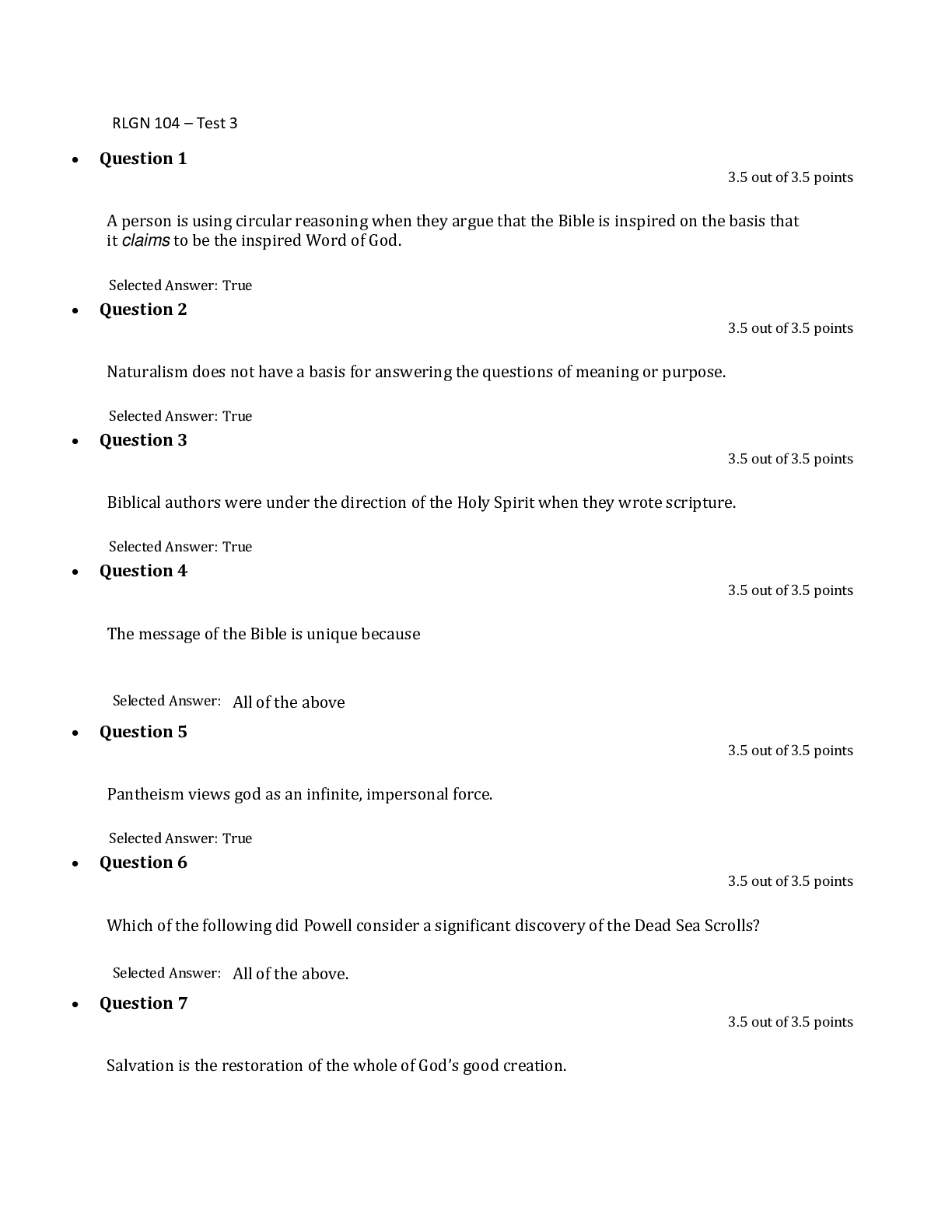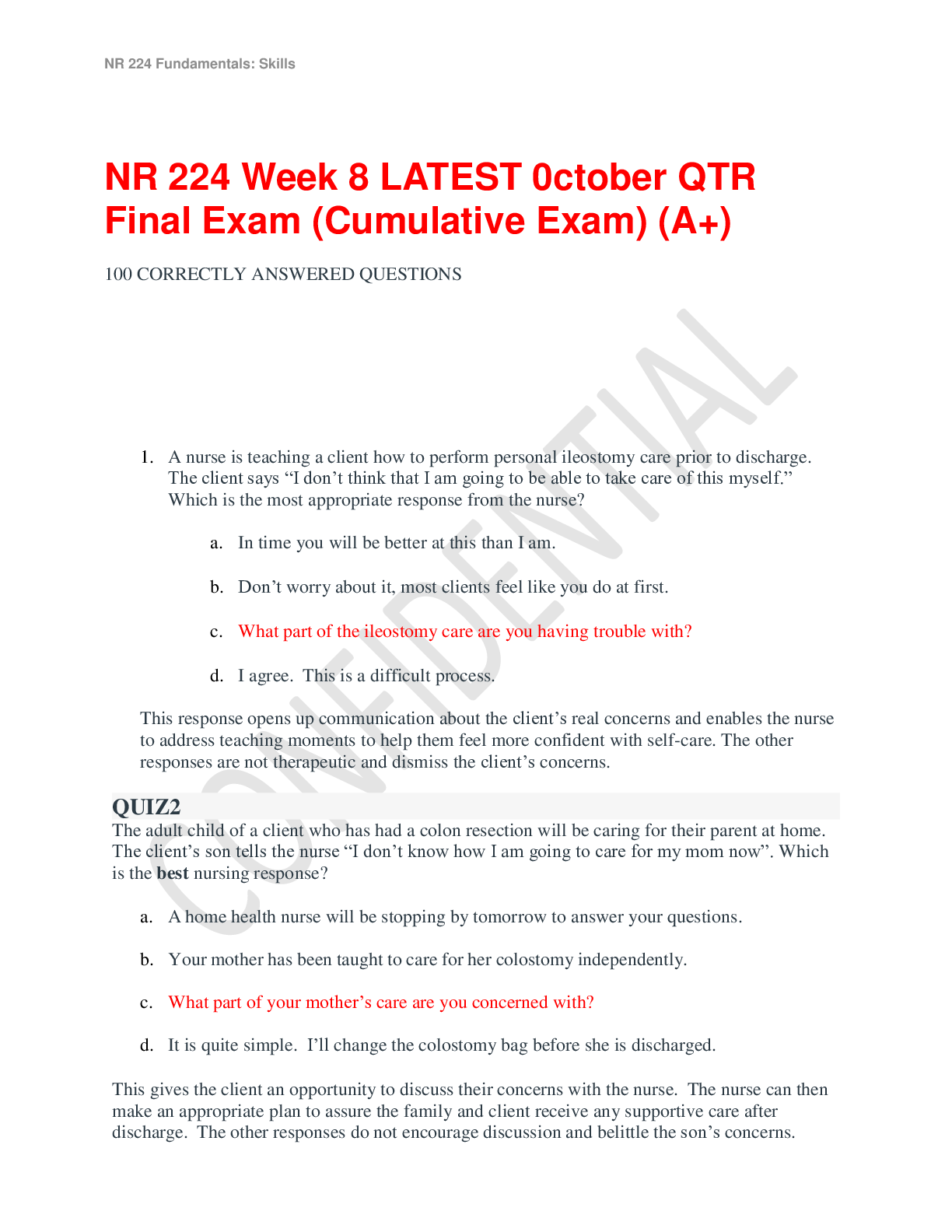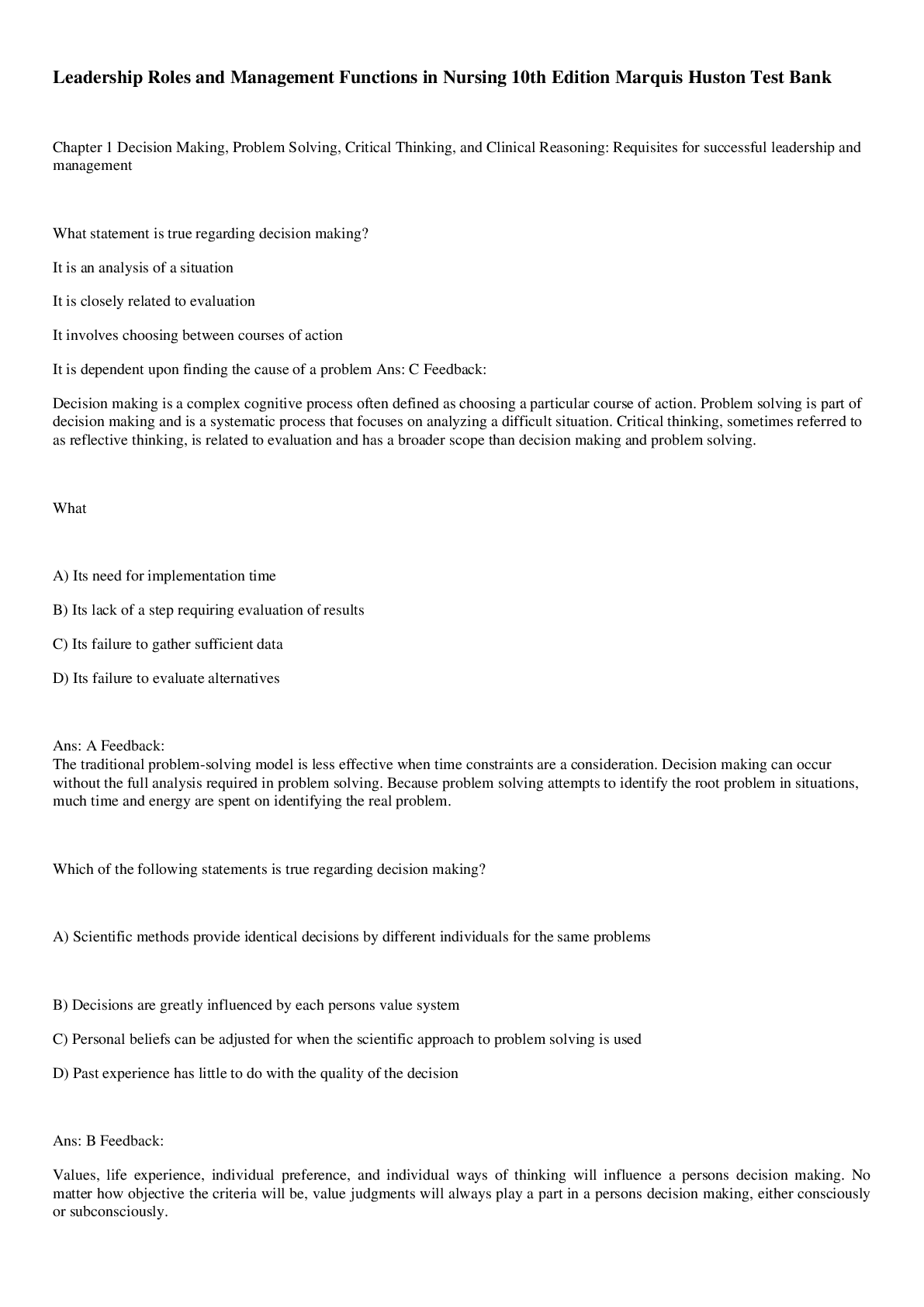*NURSING > QUESTIONS & ANSWERS > Walden University,NURS 6541 Week 5 Quiz {Already Marked,Scored 101%) (All)
Walden University,NURS 6541 Week 5 Quiz {Already Marked,Scored 101%)
Document Content and Description Below
QUESTION 6 1. Michael is a 10-month-old with erythematous papular dermatitis on the face, scalp, and neck. His mother says he is constantly rubbing the skin. There is a strong family history of asth... ma and allergies. The most likely diagnosis is: a Contact . dermatitis b Atopic dermatitis . c Seborrheic . dermatitis d Scabies . infestation QUESTION 7 1. You see a 6-year-old who obtained a cut on his foot while walking barefoot. You diagnose cellulitis. He is up to date on his DTaP vaccine. There is a low-grade temperature and appears nontoxic. There is considerable pain when you palpate the foot. Which of the following treatments is best? a Apply cool, moist compresses to the area to decrease pruritis and . begin oral amoxicillin at 80 mg/kg/day. b Give ibuprofen for pain and/or fever and begin oral penicillin VK. . c Advise rest and immobilization, begin cephalexin (Keflex) or . sulfamethoxazole/trimethoprim (Bactrim), and use warm moist compresses. d Give acetaminophen for pain or fever and begin oral azithromycin . (Zithromax). QUESTION 8 1. You receive a phone call from a mother of a 3-year-old who was diagnosed yesterday with molluscum contagiosum at a well-child visit. The mother was not at the visit and has questions about what type of treatment the child will need. Your best response is: a There is low risk of communicability to others and the rash is self- . limiting, so no treatment is necessary. b The rash is highly contagious and the child should avoid contact . with other children until the rash clears. c Systemic involvement is common, so the child must be treated . with oral antivirals like acyclovir. d The child should be evaluated by a dermatologist because this . disorder can cause long-term sequelae. QUESTION 9 1. You diagnose a 2-month-old with atopic dermatitis. She has an erythematous pruritic rash on her cheeks and scalp with ovoid patches on her trunk. What is the most important intervention at this time? a Educate the parents this is a chronic disease she will likely have . for the rest of her life. b Discuss potential food triggers that should be avoided. . c Prescribe a medium potency topical corticosteroid. . d Emphasize the importance of consistent daily skin care with . frequent bathing and emollient lotions. QUESTION 10 1. You diagnose a 14-year-old with tinea capitis. Which of the following treatments do you recommend? a Oral griseofulvin microsize for 2 full weeks . b Nizoral shampoo and do not return to school for 1 week . c Oral griseofulvin microsize taken with whole milk or other fatty . foods, and selenium sulfide shampoo d Oral nystatin, selenium sulfide shampoo, and the child can return . to school as long as he wears a cap [Show More]
Last updated: 1 year ago
Preview 1 out of 4 pages
Reviews( 0 )
Document information
Connected school, study & course
About the document
Uploaded On
Sep 19, 2021
Number of pages
4
Written in
Additional information
This document has been written for:
Uploaded
Sep 19, 2021
Downloads
0
Views
38








.png)










.png)




.png)

.png)




.png)
.png)

.png)



